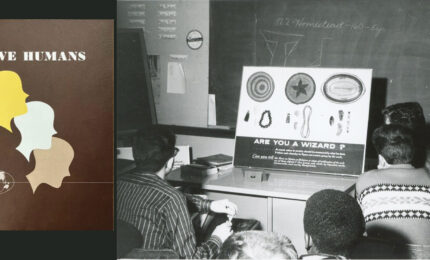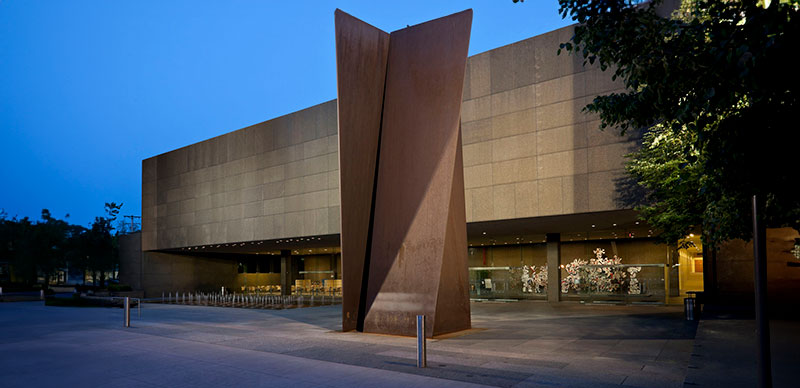Pharmaceutical engineer Shaunak Kulhalli lived a nomadic life moving from New Delhi to New Jersey for graduate school and then Wyoming for his first job. When he finally settled in Pittsburgh six years ago, he was looking for community—but meeting new people posed a challenge for the self-described introvert.
Last spring, Kulhalli responded to a LinkedIn ad about Carnegie Connectors, a group for young professionals at Carnegie Museums. It offered opportunities to interact with other culture-loving people in their 20s and 30s, including engaging with exhibitions through hands-on activities that were perfect for stimulating conversation.
Kulhalli says it helped him meet people from all walks of life.
“I’ve never been part of such a diverse community, possibly in my entire life,” says Kulhalli, 33, of Squirrel Hill.
Launched in early 2024, Carnegie Connectors aims to entice adults aged 21-40 with membership to its four museums, exclusive events, and discounted admission to 21+ evenings at Carnegie Science Center and Carnegie Museum of Natural History. Carnegie Connectors events feature complimentary beer, wine, and snacks.
Shannon Jeffcoat, senior director of membership and annual giving at Carnegie Museums, says the program is designed to help young professionals have more personalized museum interactions with their peers.
Throughout her 25-year museum career, Jeffcoat has seen a participation gap in younger adults. Parents of young children tend to be engaged with the museums while their kids are young, but they often let their memberships lapse once the kids are grown. And many single adults who frequented the museums in their youth don’t return to them once they’re living independently.
Prior to coming to Carnegie Museums in 2020, Jeffcoat established membership programs for young professionals at museums in Houston and Seattle and saw how they served an overlooked demographic.
“Members, in general, are the heart and soul of a museum, and our visitors, camp parents, and donors are our best community advocates,” Jeffcoat says. “This is a way to reengage them, get them back in the door, and start building out loyalty.”
Jeffcoat hoped to attract 100 members in the program’s first year. The first event at Carnegie Science Center’s TITANIC: The Artifact Exhibition maxed out at 150 registrants.
The momentum continued in May with a Connectors event at The Stories We Keep, a look at 80 items in the Museum of Natural History’s collection from ancient Egypt. Carnegie Connectors have also enjoyed events at KAWS + Warhol, Beate Kuhn: Turn, and Widening the Lens: Photography, Ecology, and the Contemporary Landscape.
“It’s pretty hard to make friends as adults, so it’s fun to see adults making crafts together, having fun, and making friends at the events,” says Bridget Hovell, assistant director of membership and annual giving.
Carnegie Connectors already boasts close to 250 members, with a steering committee of 30 people that includes young professionals from Highmark Health, the International Poetry Forum, Columbia Gas, Duolingo, Pittsburgh City Council, UPMC, Vibrant Pittsburgh, and the Jewish Federation of Greater Pittsburgh.
Steering committee member Jake Grefenstette saw potential for collaboration between Carnegie Connectors and the International Poetry Forum, where he is president and executive director.
He thought that working with Carnegie Museums’ network of young professionals could introduce a new generation to his poetry-focused nonprofit. In December, he plans to invite Carnegie Connectors members to the International Poetry Forum’s evening with Emily Wilson at Carnegie Music Hall.
Grefenstette says he appreciates the diverse experiences the Carnegie Connectors membership provides. He can make daytime visits with his dinosaur- and art-obsessed 2-year-old child while encountering the museums in a more personalized way at the after-hours events.
“There’s just something about being in a museum after dark,” Grefenstette says.
Etna, Pennsylvania, resident McKenna Gilbert grew up visiting the Carnegie Museums and enjoys the relaxed feel of Carnegie Connectors events. The 30-year-old communications specialist recalled a thoughtful conversation about the striking similarities that a cup, sandals, and jewelry in the Egyptian exhibition bear to objects we use today. Gilbert says these kinds of conversations are easier to have in the more intimate atmosphere provided by Carnegie Connectors events.
“I don’t think a conversation like that would have happened if I had gone on a [typical] Saturday,” Gilbert says. “You don’t have crowds and children and large groups [at Carnegie Connectors events]. It’s definitely an attractive program and a way to increase accessibility.”
Quinn Kirby, 26, also felt a connection to the Egyptian artifacts.
“I’ve never been part of such a diverse community, possibly in my entire life.”
–Shaunak Kulhalli, Carnegie Connectors member
Kirby is manager of strategic initiatives for the North Side/Shore Chamber of Commerce. They initially joined the Carnegie Connectors steering committee to build a relationship between the chamber and its North Side neighbors, The Warhol and Science Center. After joining, they realized membership is an incredible value.
“Every single weekend of September, I went to Carnegie Museum of Art at least once, and there was a weekend I went twice,” Kirby says. “That in itself paid for the membership—and I also go to the events.”
Kirby experienced profound moments of emotional connection with exhibitions, as well as shared lighthearted moments with fellow guests. After viewing remnants from Titanic’s ill-fated voyage, Kirby was surprised by a fellow Carnegie Connector dressed as the controversial ship door from the Titanic movie—the door that was (allegedly) too small to hold both Kate Winslet and Leonardo DiCaprio as they floated in the icy waters.
“Art begets art,” Kirby says, laughing at the memory. “And [the door] was big enough for the two of them!”
Young professionals at a Carnegie Connectors event held at the Museum of Natural History.







